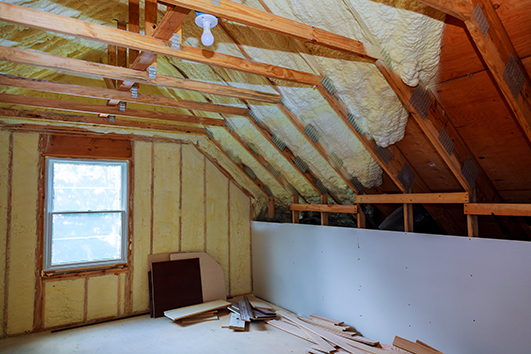
Open-Cell Spray Foam
What is it?
Open-cell spray foam is a type of insulation made from polyurethane that expands rapidly upon application and creates a soft, spongy texture with tiny open air pockets or “cells.” These open cells remain connected, which makes the foam lighter, more flexible, and less dense than its counterpart, closed-cell spray foam.
Key Characteristics
- Texture: Soft, sponge-like
- Density: ~0.5 pounds per cubic foot
- Expansion: Expands up to 100 times its liquid volume
- Color: Usually white or light cream.
faq's
Air Sealing:
+ Fills Cracks and gaps to stop air leaks effectively.
+ Great for reducing drafts and heat loss.
Soundproofing:
+ Excellent sound absorption due to its porous structure.
+ Often used in interior walls for noise control.
Affordable:
+ Cheaper per board foot than closed-cell foam.
Flexible & Breathable:
+ Can move slightly with framing as the house settles.
+ Allows some moisture permeability, which can be good or bad depending on the application.
Lower R-Value:
+ (~R-3.5 to R-3.8 per inch) Compared to closed-cell (R-6 to R-7).
Not a Vapor Barrier:
+Moisture can pass through, which could lead to issues in humid climates or improperly designed systems.
Not suitable for exterior applications:
+ (roof decks, basements, crawl spaces) Unless paired with other vapor control methods.
+ Interior walls and ceilings for sound and air sealing.
+ Attics when vapor control is not a concern.
+ Wall cavities in moderate or dry climates.
